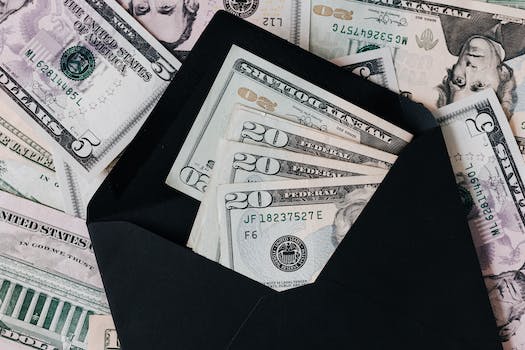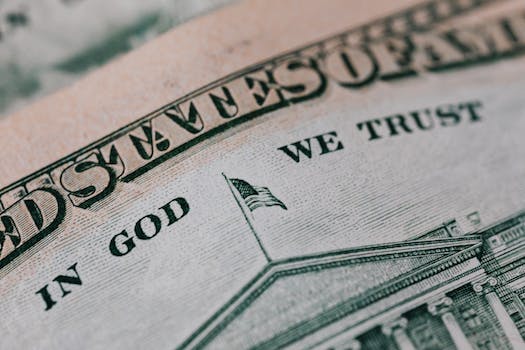How To Live Minimalist And Save Money
“Less is more: Simplify your life and your finances with minimalist living.”
Introduction
Living a minimalist lifestyle can be a great way to save money and simplify your life. By focusing on the essentials and cutting out unnecessary expenses, you can reduce your financial burden and enjoy a more fulfilling life. In this article, we will explore some tips and strategies for living a minimalist lifestyle and saving money in the process.
The Benefits of Minimalism: How Living with Less Can Save You Money
Living a minimalist lifestyle has become increasingly popular in recent years. The idea of simplifying your life and living with less can be appealing for many reasons, including saving money. In this article, we will explore the benefits of minimalism and how it can help you save money.
One of the main benefits of minimalism is that it can help you save money on your living expenses. When you live with less, you need less space to store your belongings. This means that you can downsize your living space and save money on rent or mortgage payments. Additionally, having fewer possessions means that you will spend less money on furniture, home decor, and other household items.
Another way that minimalism can help you save money is by reducing your consumption habits. When you live a minimalist lifestyle, you become more mindful of what you buy and why you buy it. You start to question whether you really need something before making a purchase. This can help you avoid impulse buys and unnecessary spending, which can add up over time.
Minimalism can also help you save money by reducing your transportation costs. When you live with less, you don’t need as much space to store your belongings, which means you can downsize your vehicle. This can save you money on car payments, insurance, and gas. Additionally, living in a smaller space can make it easier to walk or bike to work, which can save you money on transportation costs.
Another benefit of minimalism is that it can help you save money on food. When you live with less, you become more mindful of what you eat and how much you spend on food. You start to focus on buying only what you need and avoiding food waste. This can help you save money on groceries and dining out.
Living a minimalist lifestyle can also help you save money on entertainment. When you have fewer possessions, you become more creative in finding ways to entertain yourself. You might start reading more books, going for walks, or spending time with friends and family. These activities are often free or low-cost, which can help you save money on entertainment expenses.
Finally, minimalism can help you save money by reducing your stress levels. When you live with less, you have fewer things to worry about and take care of. This can help you feel more relaxed and less stressed, which can have a positive impact on your mental and physical health. Additionally, when you’re not constantly buying and accumulating possessions, you don’t have to worry about the financial burden that comes with it.
In conclusion, living a minimalist lifestyle can have many benefits, including saving money. By simplifying your life and living with less, you can reduce your living expenses, transportation costs, food expenses, entertainment expenses, and stress levels. If you’re interested in living a minimalist lifestyle, start by decluttering your home and focusing on what’s truly important to you. With time and practice, you’ll find that living with less can be a rewarding and fulfilling way to live.
Minimalist Living on a Budget: Tips and Tricks

Living a minimalist lifestyle can be a great way to save money and reduce stress. By simplifying your life and focusing on what truly matters, you can free up your time and resources to pursue your passions and live a more fulfilling life. In this article, we’ll explore some tips and tricks for living a minimalist lifestyle on a budget.
First and foremost, it’s important to understand what minimalism is all about. At its core, minimalism is about simplifying your life and reducing clutter. This can mean getting rid of unnecessary possessions, simplifying your schedule, and focusing on the things that truly matter to you. By doing so, you can reduce stress, increase your happiness, and save money in the process.
One of the best ways to start living a minimalist lifestyle is to declutter your home. This means getting rid of anything that you don’t need or use on a regular basis. Start by going through your closet and getting rid of any clothes that you haven’t worn in the past year. Then move on to other areas of your home, such as your kitchen, bathroom, and living room. Be ruthless in your decluttering efforts, and don’t be afraid to donate or sell items that are still in good condition.
Another key aspect of minimalist living is simplifying your schedule. This means saying no to activities and commitments that don’t align with your values or goals. By doing so, you can free up your time and energy to focus on the things that truly matter to you. This could mean spending more time with your family, pursuing a hobby, or simply relaxing and enjoying some downtime.
When it comes to saving money as a minimalist, there are a few key strategies to keep in mind. First, focus on buying only what you need. This means avoiding impulse purchases and sticking to a budget. When you do need to buy something, consider buying used or refurbished items instead of new ones. This can save you a significant amount of money over time.
Another way to save money as a minimalist is to focus on experiences rather than possessions. Instead of buying a new gadget or piece of clothing, consider spending your money on a fun experience, such as a weekend getaway or a concert. These experiences can be much more fulfilling than material possessions, and they won’t clutter up your home.
Finally, it’s important to remember that minimalist living is a journey, not a destination. It’s okay to make mistakes and slip back into old habits from time to time. The key is to stay focused on your goals and keep working towards a simpler, more fulfilling life. By doing so, you can save money, reduce stress, and live a happier, more meaningful life.
How to Build a Minimalist Wardrobe and Save Money
Living a minimalist lifestyle has become increasingly popular in recent years. It’s a way of living that focuses on simplicity, reducing clutter, and living with only the essentials. One area where this lifestyle can be particularly beneficial is in your wardrobe. By building a minimalist wardrobe, you can save money, reduce decision fatigue, and simplify your life.
The first step in building a minimalist wardrobe is to declutter your current wardrobe. Take everything out of your closet and go through each item one by one. Ask yourself if you’ve worn it in the past year, if it still fits, and if it’s in good condition. If the answer to any of these questions is no, it’s time to let it go. Donate or sell any items that you no longer need or want.
Once you’ve decluttered your wardrobe, it’s time to start building your minimalist wardrobe. The key is to focus on quality over quantity. Invest in high-quality, versatile pieces that can be mixed and matched to create a variety of outfits. Stick to neutral colors like black, white, gray, and navy, as they are easy to mix and match.
Start with the basics, such as a white t-shirt, a black blazer, and a pair of jeans. These pieces can be dressed up or down and can be worn in a variety of settings. From there, add a few statement pieces, such as a colorful scarf or a patterned blouse, to add some personality to your wardrobe.
When shopping for new items, be mindful of the materials and construction. Look for natural fibers like cotton, wool, and silk, as they are more durable and will last longer than synthetic materials. Pay attention to the stitching and seams, as well as the overall quality of the garment.
Another way to save money when building a minimalist wardrobe is to shop secondhand. Thrift stores, consignment shops, and online marketplaces like Poshmark and ThredUp are great places to find high-quality, gently used clothing at a fraction of the cost of new items. Not only will you save money, but you’ll also be reducing your environmental impact by giving new life to pre-loved clothing.
One of the benefits of a minimalist wardrobe is that it reduces decision fatigue. With fewer items to choose from, getting dressed in the morning becomes a simpler and quicker process. You’ll also save time and money by not constantly shopping for new items or trying to keep up with the latest trends.
In addition to saving money and simplifying your life, a minimalist wardrobe can also be a form of self-expression. By focusing on quality over quantity and choosing pieces that truly reflect your personal style, you can create a wardrobe that feels authentic and true to who you are.
In conclusion, building a minimalist wardrobe is a great way to save money, reduce decision fatigue, and simplify your life. By focusing on quality over quantity, shopping secondhand, and choosing versatile pieces that reflect your personal style, you can create a wardrobe that is both functional and stylish. So why not give it a try and see how a minimalist wardrobe can benefit your life?
Minimalist Meal Planning: How to Save Money on Groceries
Living a minimalist lifestyle can be a great way to save money and reduce stress. One area where you can make a big impact is in your meal planning. By simplifying your meals and focusing on whole foods, you can save money on groceries and improve your health at the same time.
The first step in minimalist meal planning is to take stock of what you already have. Go through your pantry, fridge, and freezer and make a list of everything you have on hand. This will help you avoid buying duplicates and wasting food.
Next, plan your meals for the week. Start by choosing a few simple recipes that use ingredients you already have on hand. Look for recipes that use whole foods like vegetables, grains, and legumes. These foods are often cheaper than processed foods and are better for your health.
When you’re planning your meals, think about how you can use leftovers. For example, if you make a big pot of soup, you can eat it for lunch the next day or freeze it for later. Leftovers can also be used to make new meals. For example, leftover roasted vegetables can be added to a salad or used as a topping for a pizza.
Another way to save money on groceries is to buy in bulk. Look for stores that sell items like grains, beans, and nuts in bulk. These foods are often cheaper than buying them in pre-packaged containers. You can also save money by buying larger packages of meat and freezing what you don’t use right away.
When you’re shopping for groceries, stick to your list. Avoid impulse buys and stick to the items you need for your planned meals. This will help you avoid wasting food and money.
Finally, consider growing your own food. Even if you don’t have a lot of space, you can grow herbs or small vegetables in pots on your balcony or windowsill. This can be a fun and rewarding way to save money on groceries and eat fresh, healthy food.
In conclusion, minimalist meal planning can be a great way to save money on groceries and improve your health. By simplifying your meals, focusing on whole foods, and using leftovers, you can reduce waste and save money. Buying in bulk, sticking to your list, and growing your own food are also great ways to save money on groceries. With a little planning and creativity, you can enjoy delicious, healthy meals without breaking the bank.
Conclusion
Living a minimalist lifestyle can help you save money by reducing unnecessary expenses and focusing on what truly matters. By decluttering your home, simplifying your wardrobe, and being mindful of your spending habits, you can live a more intentional and fulfilling life while also saving money. It’s important to remember that minimalism is not about deprivation, but rather about prioritizing what brings you joy and letting go of what doesn’t. With a little effort and commitment, anyone can adopt a minimalist lifestyle and reap the financial benefits.






